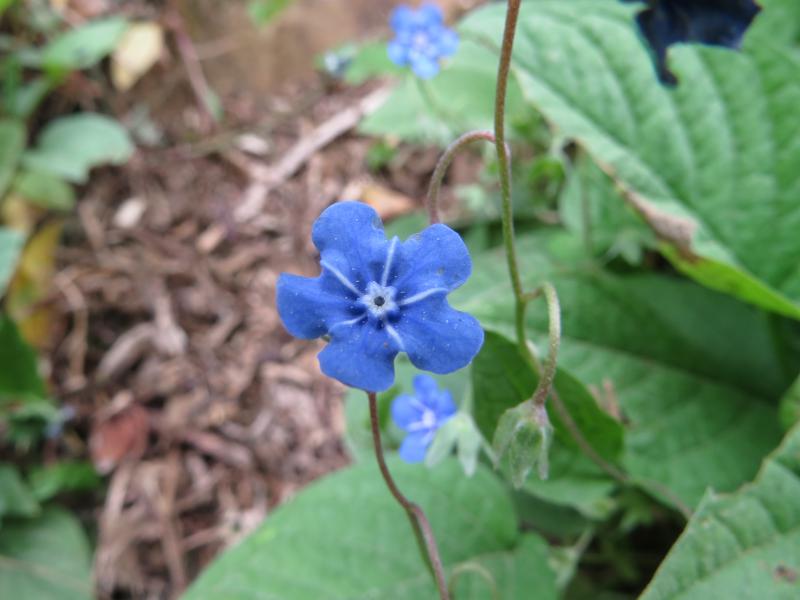Omphalodes verna Moench (SE-Eur.) – A rare, locally naturalized escape from or (more often) a relic of cultivation or throw-out. Already recorded in large amounts as early as 1821 at Sint-Pietersberg (Durand 1899). Well-documented in Belgian herbaria from several locations, but most are from the 2nd half of the 19th century (Bonneville, Hoyoux, Sint-Pietersberg, etc.). Much more frequent in Wallonia than in Flanders. Obviously decreasing in the 20th century. Classical locations need to be checked: Theux (at least since 1907 in the vicinity of the Hodbomont castle), Feluy (at least since 1911 at the castle of La Rocq), Deurne (at least since 1912 at the Ertbrugge estate),… Possibly gone in many of its former sites by now (much less popular in cultivation nowadays). Recently still confirmed from Habay-la-Neuve (dense populations) (Thoen 1999) and Muno (Champluvier 1995). In the latter locality is was already known before 1950 (comm. T. Henneresse 2014). Omphalodes verna always grows in damp deciduous woodland (often former parks).
Omphalodes verna looks like Brunnera macrophylla and the latter is now more common in cultivation. Omphalodes has much larger corollas (10-15 mm across, versus 3-4 mm across) in a laxer inflorescence with less flowers (see also Stace 2010). Also, Omphalodes verna has corollas with distinct whitish folds.
 |
 |

Selected literature:
Champluvier D. (1995) Omphalodes verna. In: Notes brèves sur certains centuries distribuées dans le fascicule 25. Soc. Ech. Pl. Vasc. Eur. Bass. Médit., Bull. 25: 64.
Durand T. (1899) Phanérogames. In: De Wildeman E. & Durand T., Prodrome de la flore belge. A. Castaigne Editeur, Bruxelles: 1112 p.
Stace C. (2010) New flora of the British Isles, 3th ed.: XXXII + 1232 p. Cambridge University Press.
Thoen D. (1999) La flore du bassin hydrographique de la Semois. Observations chorologiques et écologiques sur la période 1995-1997. Adoxa 22: 11-20.

